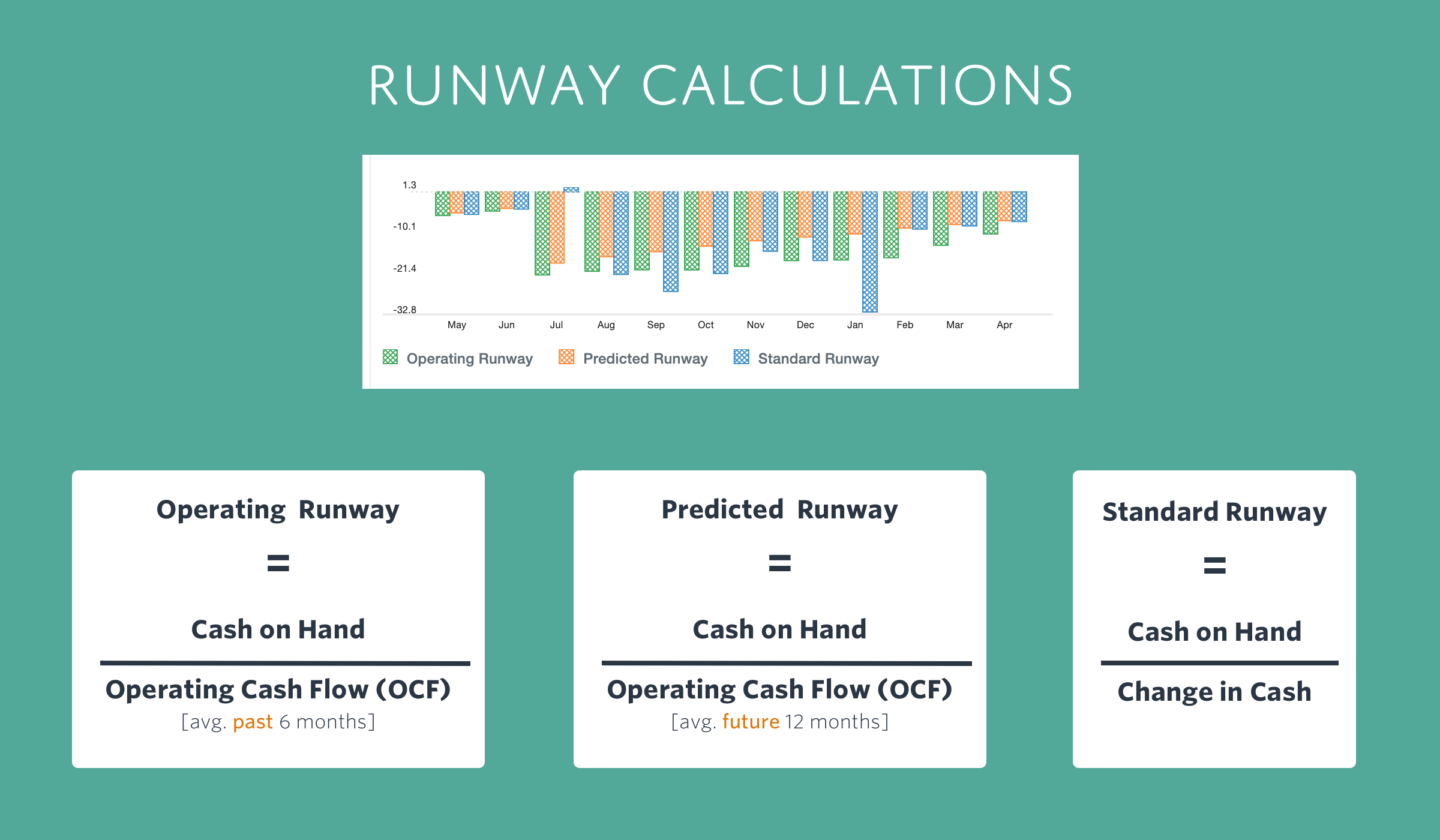The difference between a company's current assets and its current liabilities - their net working capital - helps businesses meet their short-term obligations and manage day-to-day operations more effectively.
Calculating net working capital provides valuable insights into a company's liquidity, financial health, and its ability to cover short-term liabilities. This article will explore the significance of net working capital in assessing a company's financial position and provide tips on how to effectively calculate net working capital geared for growth.
Net Working Capital: Formula & Components
Net working capital is a crucial financial metric that measures a company's short-term liquidity and operational efficiency, providing insights into its ability to manage immediate expenses and obligations.
Calculating net working capital is your best bet for evaluating financial ratios and assessing your business' overall financial health. Since working capital represents the amount of capital available to meet short-term financial obligations, it’s calculated by subtracting current liabilities from current assets:
Net Working Capital = Current Assets - Current Liabilities
A positive net working capital indicates that a company's current assets exceed its current liabilities. For example, if a company has $500,000 in current assets and $300,000 in current liabilities, its positive net working capital is $200,000. This means the company has sufficient resources to cover short-term debts and may have extra cash available.
On the other hand, negative working capital implies that a company's current liabilities surpass its current assets, which can be a warning sign of financial difficulties and potential liquidity problems.
While the formula for calculating net working capital is relatively simple, there are several components to help you understand it better:
Current Assets
Current assets are resources to be converted into cash or consumed within one year. They represent the company's most liquid assets and include the following:
a. Cash and Cash Equivalents: This category includes physical cash, cash in bank accounts, and highly liquid investments that can be quickly converted into cash.
b. Accounts Receivable: These are the amounts owed to the company by its customers for goods or services provided on credit. Accounts receivable arise when a company sells its products or services with payment terms that allow customers to make payment at a later date.
c. Inventory: Inventory are the goods or products that a company holds for sale in the ordinary course of business. It includes raw materials, works-in-progress, and finished goods.
d. Short-Term Investments: These are investments that can be easily converted into cash within a year, such as marketable securities or short-term bonds.
e. Prepaid Expenses: Prepaid expenses are payments made in advance for future goods or services, such as prepaid rent or prepaid insurance premiums.
Current Liabilities
Current liabilities are the financial obligations that a company is expected to settle within one year. They represent the company's short-term debts and obligations. The components of current liabilities include the following:
a. Accounts Payable: These are the amounts owed by the company to its suppliers or vendors for goods or services received on credit. Accounts payable arise when a company purchases goods or services and agrees to pay for them at a later date.
b. Accrued Expenses: Accrued expenses are costs that have been incurred but not yet paid. Examples include accrued salaries, accrued interest, or accrued utilities.
c. Short-Term Loans: Short-term loans are borrowings that are due for repayment within one year. They often include lines of credit, working capital loans, or short-term notes.
d. Current Portion of Long-Term Debt: When a company has long-term debt with payments due within the next year, that portion is classified as a current liability.
Calculating Net Working Capital for Business Growth
Net working capital is a fundamental part of financial planning, as it helps businesses better position themselves for growth, leverage opportunities, and navigate challenges effectively. Here are specific ways calculating working capital contributes to business growth:
Liquidity Management
Net working capital provides insight into your company's short-term liquidity position. By understanding the difference between current assets and current liabilities, you can assess your business' ability to cover immediate expenses. Sufficient net working capital ensures that your company has the necessary resources to pay suppliers, meet payroll, and fund day-to-day operations. Also, effective liquidity management helps you sustain business growth and ensures smooth operations, while minimizing the risk of financial instability.
Working Capital Efficiency
Evaluating the efficiency of your company's working capital management reveals how effectively the business utilizes its current assets and liabilities. Calculating net working capital helps you optimize the management of inventory, accounts receivable, and accounts payable and improves your working capital position. This, in turn, frees up cash for growth initiatives, like investing in new projects, expanding operations, or pursuing strategic opportunities.
Funding and Financing
Investors typically assess a company's net working capital to evaluate its short-term financial stability. A healthy net working capital position demonstrates your company's ability to repay short-term debt and indicates a reduced risk of default. Having positive net working capital can improve your company's creditworthiness and increase its access to capital for growth initiatives.
Sustainable Growth
By accurately assessing net working capital, companies can identify potential shortfalls and take proactive measures to strengthen their financial position. This includes leveraging financial forecasting to anticipate future working capital needs and aligning strategies to optimize cash flow management. Companies can negotiate favorable payment terms with suppliers to improve cash inflows and minimize the impact on net working capital.
Risk Management
Net working capital helps in identifying financial warning signs like increasing reliance on short-term debt. Early detection of such risks enables companies to implement corrective measures and proactively manage their financial health. Furthermore, businesses can better withstand market fluctuations, economic uncertainties, and other external challenges that can impact growth.
By regularly calculating and monitoring net working capital, companies can identify potential issues, optimize their working capital management, and take appropriate actions to ensure financial stability and support their growth objectives.
Best Practices for Calculating Net Working Capital
When calculating net working capital, there are several best practices to ensure accuracy and effectiveness. Here are some key practices to consider:
Accurate Classification
Ensure that current assets and current liabilities are accurately classified according to their expected conversion or settlement within one year. Start by identifying all the current assets on the company's balance sheet, then gather information about the company's current liabilities. Review financial statements and ensure that all relevant items are appropriately categorized. Exclude non-current items, and focus only on those that are expected to be converted or settled within one year.
Detailed Financial Statements
Accurate and up-to-date financial reporting is essential when calculating net working capital. Financial statements, particularly the balance sheet, should provide updated information on current assets and liabilities. To this end, maintain consistency when considering current assets and liabilities within the designated time period. For instance, when using a one-year period, ensure that all components are based on the same time frame for accurate comparison and analysis. When you’re ready to start preparing a model that helps you plan your upcoming business capital needs, a comprehensive FP&A software can automatically generate 3-way financial statements for historical and future periods from your model, including Income Statement, Balance Sheet, and Statement of Cash Flows.
Regular Monitoring and Updates
Net working capital should be calculated regularly to stay informed about the company's financial position. Set a schedule to review and update the calculation periodically, such as quarterly or annually, depending on your business needs.
A Systematic Approach
Follow a structured and systematic approach to calculating net working capital. Ensure that you consistently apply the formula and double-check your calculations to minimize errors. Look beyond a single net working capital figure, and analyze trends and variations over time. Assess how net working capital changes from one period to another, and identify any patterns or anomalies that require attention or action.
Reviewing Industry Benchmarks
Compare your net working capital figure with industry benchmarks to assess your company's performance and identify areas for improvement. This can help you measure your working capital efficiency and make informed decisions based on industry standards. The best software will provide templates for various industries, so you can be sure to stay competitive, no matter your business.
A Robust Financial Planning Tool
Integrating a financial planning tool will enhance accuracy and efficiency by automating the calculation process, providing scenario modeling, and enabling comprehensive cash flow forecasting. The right tool will facilitate sensitivity analysis to assess the impact of variable changes on net working capital and allow for integration with other financial metrics and key performance indicators. Collaborative features support transparency and alignment, while reporting capabilities aid in generating visualizations and reports.
Net working capital should be a key part of your overall financial management strategy, in conjunction with other financial metrics and indicators that’ll provide a high-level view of your company's financial health and performance.
Jirav enables better decision-making through advanced features that optimize the calculation of net working capital, scenario modeling, cash flow forecasting, and integration with financial metrics. Book a demo with our experts, and experience firsthand how our FP&A tool can simplify your processes.












